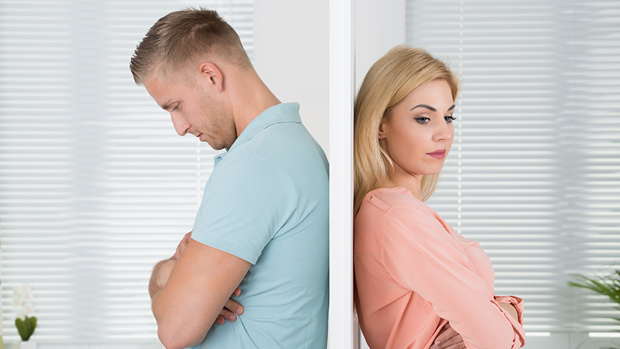Could your relationship 'style' messing up your love life?
- Publish date
- Friday, 8 Dec 2017, 10:00AM

Photo / Getty
Relationships: our greatest source of joy as well as our greatest cause of pain. As a self-confessed former love disaster and now as a therapist, it's my favourite topic and area of my life that I have struggled with the most. What I could never completely figure out was why it seemed so much easier for some compared to others.
I think there are many different factors that come into play. However, the theory that I have found to bring me the most significant insight is The Adult Attachment Theory. When I first read about it, it was like a bolt of lightning. Everything was illuminated: "Yes! This is why my relationships have been such disasters."
There are four main "attachment styles" in which people perceive and react to intimacy in romantic relationships.
- Secure – “Intimacy is easy. I can depend on others they can depend on me.”
- Anxious/Preoccupied – “I love you, what if you leave me?”
- Dismissive/Avoidant – “Every time I get close, I run away.”
- Fearful/Avoidant – “I like you, but I don’t want to get hurt, so go away.”
It all starts when we are babies; how we bond with our mothers and primary caretakers imprints us to how we connect as adults. We all develop an attachment system, a way of bonding with our caretakers to survive because our life depends on it. This way of bonding becomes an internal programme or system that creates how we feel about ourselves and our expectations for how others will respond to us.
The more supportive and loving our caretakers are, the more secure we tend to feel. However, personality type plays a role as well. Some people grow up an insecure type, no matter what type of childhood they have. Our attachment type is triggered when we are stressed or feel threatened. How we react to that response all depends on our type.
Secure (Low Anxiety/Low Avoidance)
Secure types are loving, warm, open and comfortable with being intimate. They make up around 50 to 60% of the population. When their attachment system is triggered, they can self-regulate their emotions. They are the least likely to be single since they find being in relationships easy.
They are the best partners for all of the other types since they will stick around and give their partner the reassurance they need and are easily comforted. They have low anxiety within themselves in regards to relationships and low avoidance of being intimate.
Anxious/Preoccupied (High Anxiety/Low Avoidance)
Anxious/Preoccupied types are inclined to fixate on their relationships. No one can FB stalk like an anxious/preoccupied. They’re the ones driving their friends crazy by over-analysing their latest target. They worry that they are not good enough and put their partners on pedestals. They need a lot of reassurance and affirmations to feel secure. If their attachment system is triggered, it can stay stuck on hyper-alert, and they feel that the relationship is under threat.
Preoccupied types are only as happy as the relationship they’re in, and they may have or mistakenly think they have a sixth sense of what others are feeling. Often hypersensitive, they can overreact and say things that they later regret. Pushing people away by being insecure or needy, achieving the exact opposite of the closeness they desire.
Dismissive/Avoidants (Low Anxiety/High Avoidance)
Dismissive/Avoidants types perceive intimacy as a threat to their freedom. They play it cool and have a hard time expressing their feelings. They don’t really trust that people will be there for them, so it’s unsafe to depend on others. If they are always saying they need space and leave others out in the cold, they are probably an avoidant. They may ignore their partners or be overly critical, needing to disconnect to deactivate their attachment system and feel calm again.
Fearful/Avoidants (High Anxiety/High Avoidance)
Fearful/Avoidants types may long for love but have a hard time making it last. They’re the love addicts, the serial monogamists. Some may come on very strong in the beginning, however, they are actually commitment-phobics, so they run away.
Ultimately, they have a very hard time trusting, so they flip back and forth between being really full-on and then withdrawing. Or they stay hung up on one particular ex or person, no one else ever measuring up as a way to avoid relationships.

Adult Attachment Diagram based on the work of Brennan, Clark, and Shaver’s (1998) ECR and Fraley, Waller, and Brennan’s (2000)
Realizing that I was a combination of preoccupied/fearful/avoidant type (aren’t I lucky) helped me to finally understand my behaviour and why I struggled so much with relationships.
Anxious and Avoidant types tend to be attracted to each other. Anxious types being triggered by the withdrawal of the avoidant and the avoidant with one foot out the door. This isn’t the best combination unless both aware of it and focusing on becoming more secure.
We can swap types, depending on our partner and if our attachment system is being activated/anxious or deactivated/avoidant.
The more secure and reassuring a partner is, the less negatively-activated the other types are.
So, what can we do to become more secure in relationships?
Find out your type and learn to recognise the types of others. We aren’t purposely trying to drive each other crazy; we are just operating in a way that we have learned to keep ourselves safe. Most of us are not consciously aware of why we react and behave the way we do in relationships.
Click here to take a five-minute test to identify your attachment style.
Learn to be comfortable with being uncomfortable. Ultimately, secure people are able to self-regulate their thoughts and emotions. They can stay present with what they are feeling and look objectively at the situation. If something is upsetting them, they look to their partner for reassurance and calm down quickly without reacting in an unhealthy way.
When we feel ourselves getting anxious or pulling away in a relationship, it helps to look at what we are thinking and ask if these feelings are indeed justified or this is an old pattern from childhood?
Are you fully in your adult self? We all have a team inside us. An inner child, a rebellious teenager, a critical parent… When upset, certain parts or sub-personalities can take over, trying to keep us safe. When triggered, ask how old am I right now? Close your eyes and imagine the part of you that is helping you with this situation. It’s amazing what our subconscious will show us when we tune in.
Get Help – We go to the doctor, the nutritionist, the personal trainer, yoga and are obsessed with looking after our bodies, but most of us ignore the most important part. Our mind needs to be healthy and looked after, as well, as it affects all aspects of our life.
If you are having relationship struggles that you believe stem from an insecure attachment, one of the best things you can do go to a therapist who is familiar with working with attachment issues. It has changed my life, by identifying and becoming secure in my relationship type.
Here are some helpful websites on attachment theory:
The books I recommend on the subject are:
- “Attached: The New Science of Adult Attachment and How It Can Help You Find and Keep Love” by Amir Levine and Rachel Heller
- “Wired for Love: How Understanding Your Partner’s Brain and Attachment Style Can Help You Defuse Conflict and Build a Secure Relationship” by Stan Tatkin
- “Bad Boyfriends: Using Attachment Theory to Avoid Mr. (or Ms.) Wrong and Make You a Better Partner” by Jeb Kinnison
- “Insecure in Love: How Anxious Attachment Can Make You Feel Jealous, Needy, and Worried and What You Can Do About It” by Leslie Becker-Phelps
Caroline Cranshaw is a hypnotherapist, life coach and the author of The Smoking Cure. Find out more about her at nzhypnotherapy.co.nz

